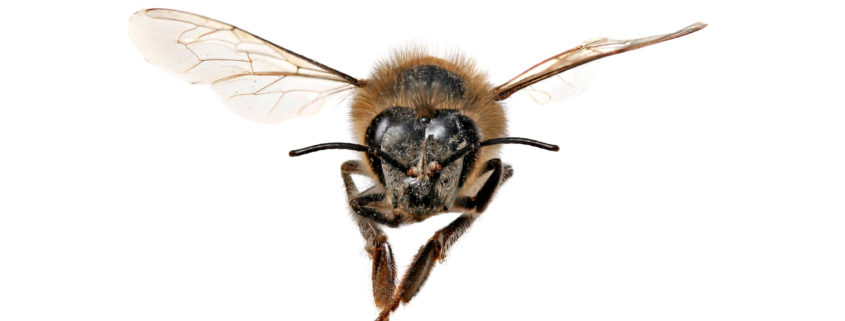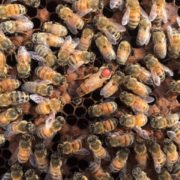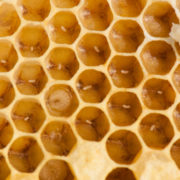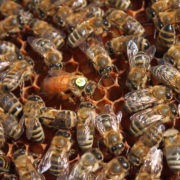The Five Eyes of the Honeybee
Did you know that bees have excellent eyesight? This is because honeybees have five eyes!
This may be surprising, as we know that bees do not rely on any eyesight when they are inside the hive. The inside of a typical beehive is completely dark. Since vision is impossible inside of a beehive, bees rely on their sense of smell to communicate, using natural chemicals called pheromones. They also navigate by using the feel of their antennae. Outside the hive, however, it’s a completely different story.
When bees are outside, they rely heavily on their sense of sight to find flowers, navigate, and survive – meaning their vision is very important. Luckily, bees have five eyes – including two large compound eyes and three simple eyes, also called ocelli. The compound eyes are located on either side of the bee’s head, while the ocelli are arranged in a triangular pattern on top of the bee’s head.
Compound eyes are what most people imagine when they think of insect eyes. They are made up of thousands of tiny lenses that all work together to make one single image for the bee – though we think they may see things more like a mosaic. Bees’ compound eyes help them see color, movement, and patterns, making their eyes most useful when it comes to visualizing and identifying flowers.
Honeybees need to be accurate at identifying colors to help them find the right flowers to pollinate. Curiously, the way their compound eyes perceive color is much different than humans. For instance, bees can’t see red, they see more of the ultraviolet (UV) spectrum than humans. Their compound eyes help them see UV iridescence on flower petals, allowing them to easily identify flowers from one another.
The bees’ ocelli, on the other hand, are simpler eyes that only have one lens. They don’t allow bees to see an image but instead enable honeybees to detect the direction and intensity of sunlight. This helps bees follow the sun and navigate during flight. Clearly, bees don’t use maps or GPS technology to find their way back to the hive. Instead, they navigate by using the location of the sun to help them locate flowers, find their hive, and not get lost directionally. This means it’s imperative for bees to have excellent visual sensitivity to the sun, and can gain a fix on the sun’s location in the sky.
Drone honeybees and queen honeybees all have the same five-eye configuration. And while they navigate similarly to worker bees, they use their compound eyes for slightly different purposes. A drone bee’s role outside the hive relies on them looking for a small target – a queen bee to mate, versus flowers to pollinate. This is why their compound eyes are much bigger than that of the worker honeybee. Once drone honeybees arrive at a drone congregation area, they use these enormous compound eyes to help them find suitable virgin queens to mate with.
A queen bee’s eyes are not as big as a drones’ however. Queen honeybees also use their five eyes for navigation, mating, and finding their way home. Once a Wildflower Meadows queen returns home from her mating flight, she uses her compound eyes to find her mating nuc, where she begins her life inside the colony as an egg-laying machine.








